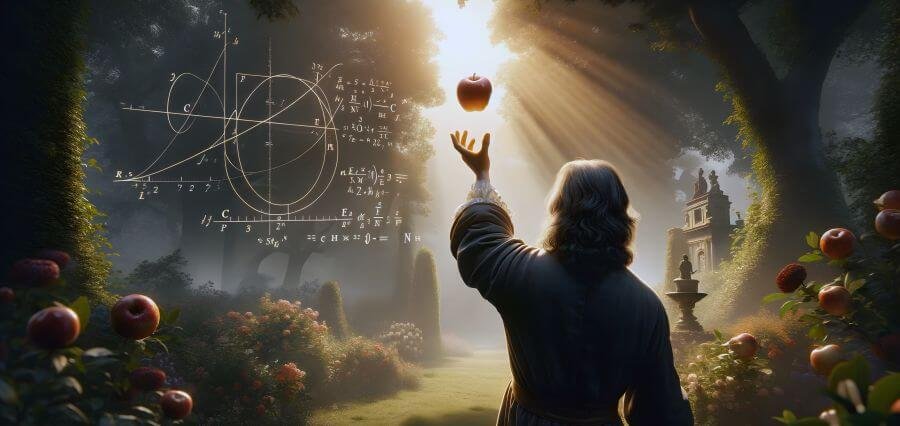Sir Isaac Newton, one of the greatest scientists in history, had a distinctive worldview. He revolutionized humanity’s understanding of the universe by developing ideas on gravity and motion.
A Brief History (1,2)
Isaac Newton, born on January 4th, 1643, in England, was an English physicist and mathematician. He studied at Cambridge University from 1661 to 1665. Newton’s contributions reshaped the scientific landscape of the 17th century.
Newton believed that the universe worked as a machine driven by mathematics. He formulated the laws of motion and gravity. The idea of a force that pulls objects toward the Earth was revolutionary. This force was defined as gravity.
Gravity became central to Newton’s theories, fundamentally changing the existing dominated scientific knowledge at the time.
It was previously known to other scientists, such as Galileo, that falling objects and astronomical motions had the same cause. However, Newton was the first to describe this in a mathematical form and explain motion and the exact mechanism of the planets’ movements and paths, elucidating that moons and planets follow gravity.
Newton’s Laws (3)
Newton published his groundbreaking book in 1687, Philosophiæ Naturalis Principia Mathematica, known as the Principia. He developed the laws of motion and gravity.
● Newton’s First Law (Law of Inertia):
“An object at rest remains at rest, and an object in motion remains in motion at constant speed and in a straight line unless acted upon by an unbalanced force.”
This law explains why objects change their state of motion only if a force has affected them.
● Newton’s Second Law (Force):
“The acceleration of an object is directly proportional to the net force acting on it and inversely proportional to its mass”
To achieve acceleration, force is affected by the mass of objects; thus, the velocity of an object changes when a force is applied.
● Newton’s Third Law (Action and Reaction):
“Whenever one object exerts a force on another object, the second object exerts an equal and opposite force on the first.”
This law describes the mutual force of action and reaction between two objects. For example, in rocket propulsion, when exhaust gas goes downward, the rocket is pushed upward with the same force.
The Law of Universal Gravitation (4)
This law states that “every particle in the universe attracts every other particle with a force along a line joining them. The force is directly proportional to the product of their masses and inversely proportional to the square of the distance between their centers.”
This concept has explained the gravitational attraction between objects. For instance, planets orbit around the Sun, and the Moon orbits around Earth. It also explained the paths of comets and the tides of oceans.
These phenomena replaced Aristotelian physics and astronomy with more accurate theories.
The Impacts of Newton’s Theories
Newton’s laws had significant effects on various fields of science and technology:
- Scientific Explanations:
Newton’s laws of motion and gravity provided the groundwork for understanding celestial and terrestrial phenomena, explaining everything from the falling of objects to the orbits of planets.
- Engineering and Technology:
These principles have been fundamental in the engineering and design of structures and machines. The construction of buildings, vehicles, and bridges relies on these laws.
- Modern Physics:
Newton’s work remained dominant until the early 20th century, and his laws remain valid for most macroscopic, non-relativistic situations.
- Everyday Life:
Newton’s laws explain various everyday situations, such as how cars accelerate, or why passengers need to wear seat belts. Understanding these laws allows for more applications and accurate predictions in the physical world.
References
- https://www.britannica.com/biography/Isaac-Newton
- https://www.eia.gov/kids/history-of-energy/famous-people/newton.php#:~:text=Isaac%20Newton%20was%20one%20of,laws%20of%20motion%20and%20gravitation.
- https://courses.lumenlearning.com/suny-physics/chapter/6-5-newtons-universal-law-of-gravitation/#:~:text=Stated%20in%20modern%20language%2C%20Newton’s,of%20the%20distance%20between%20them.
- https://www.khanacademy.org/science/hs-physics/x215e29cb31244fa1:types-of-interactions/x215e29cb31244fa1:newton-s-law-of-universal-gravitation/a/newtons-law-of-universal-gravitation














